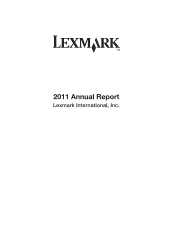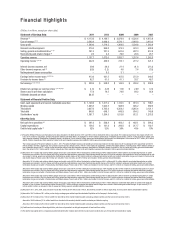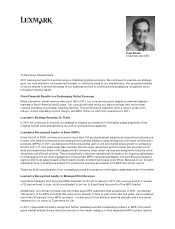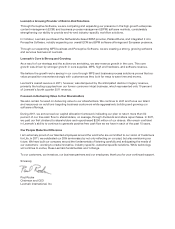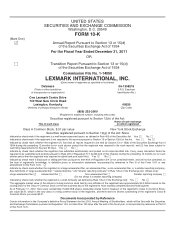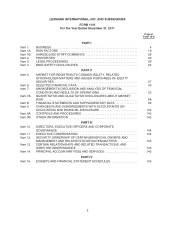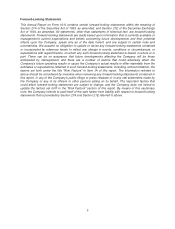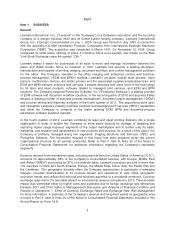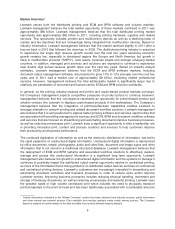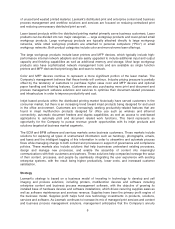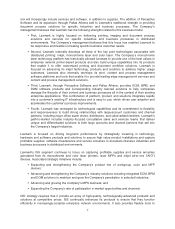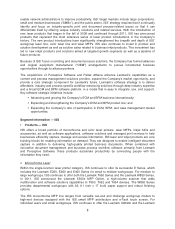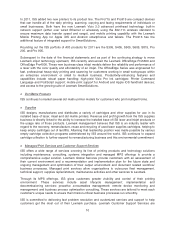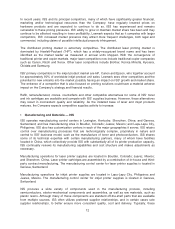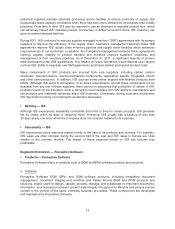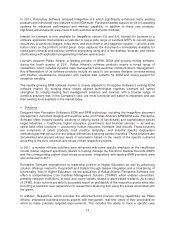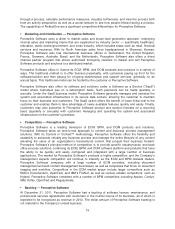Lexmark 2011 Annual Report Download - page 10
Download and view the complete annual report
Please find page 10 of the 2011 Lexmark annual report below. You can navigate through the pages in the report by either clicking on the pages listed below, or by using the keyword search tool below to find specific information within the annual report.of unused and wasted printed material. Lexmark’s distributed print and enterprise content and business
process management and workflow solutions and services are focused on reducing centralized print
and reducing unnecessary distributed print as well.
Laser based products within the distributed printing market primarily serve business customers. Laser
products can be divided into two major categories — large workgroup products and lower-priced small
workgroup products. Large workgroup products are typically attached directly to large workgroup
networks, while small workgroup products are attached to personal computers (“PCs”) or small
workgroup networks. Both product categories include color and monochrome laser offerings.
The large workgroup products include laser printers and MFP devices, which typically include high-
performance internal network adapters and are easily upgraded to include additional input and output
capacity and finishing capabilities as well as additional memory and storage. Most large workgroup
products also have sophisticated network management tools and are available as single function
printers and MFP devices that print/copy/fax and scan to network.
Color and MFP devices continue to represent a more significant portion of the laser market. The
Company’s management believes that these trends will continue. Industry pricing pressure is partially
offset by the tendency of customers to purchase higher value color and MFP devices and optional
paper handling and finishing features. Customers are also purchasing more print and document and
process management software solutions and services to optimize their document-related processes
and infrastructure in order to improve productivity and cost.
Inkjet based products within the distributed printing market historically have served customers in the
consumer market, but there is an increasing trend toward inkjet products being designed for and used
in the office environment. Customers are increasingly seeking productivity-related features that are
found in inkjet multifunction products designed for office use such as wireless and ethernet
connectivity, automatic document feeders and duplex capabilities, as well as access to web-based
applications to automate print and document related work functions. This trend represents an
opportunity for the Company to pursue revenue growth opportunities with its inkjet products and
solutions targeted at business market segments.
The ECM and BPM software and services markets serve business customers. These markets include
solutions for capturing all types of unstructured information such as hardcopy, photographs, emails,
and faxes and the intelligent tagging of this information in order to streamline and automate process
flows while managing change to both content and processes in support of governance and compliance
policies. These markets also include solutions that help businesses understand existing processes,
design and manage new processes, and enable the assembly of content into meaningful
communications with their customers and partners. These solutions help companies leverage the value
of their content, processes, and people by seamlessly integrating the user experience with existing
enterprise systems, with the result being higher productivity, lower costs, and increased customer
satisfaction.
Strategy
Lexmark’s strategy is based on a business model of investing in technology to develop and sell
imaging and process solutions, including printers, multifunction devices and software including
enterprise content and business process management software, with the objective of growing its
installed base of hardware devices and software installations, which drives recurring supplies sales as
well as software maintenance and services revenue. Supplies have been the primary profit engine of
the business model. Supplies profit helps fund new technology investments in products, solutions,
services and software. As Lexmark continues to increase its mix of managed print services and content
and business process management solutions, management anticipates that the Company’s annuity
6

